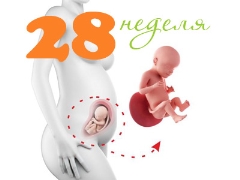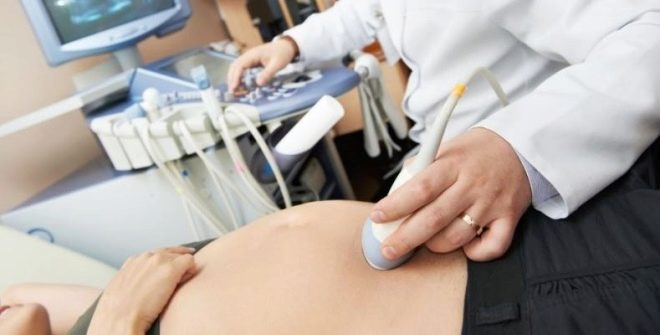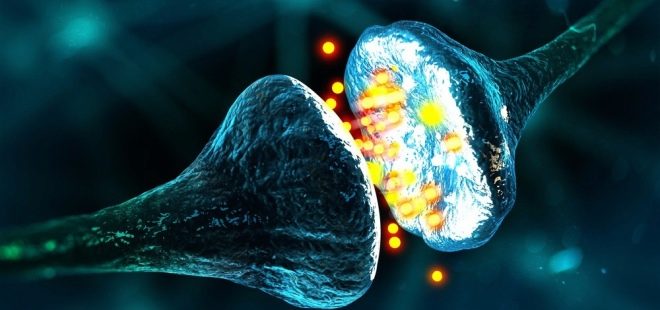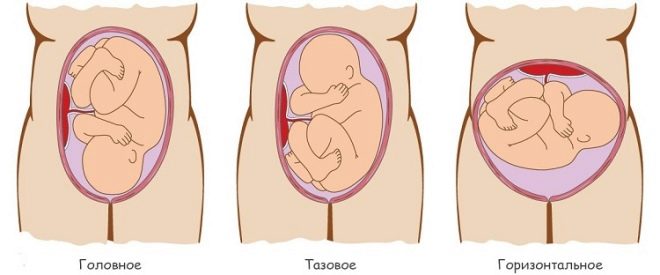Fetal development in the 28th week of pregnancy
Week 28 is the time when the baby will be born very soon. This article will tell about the features of the development of the fetus at this time.
Anatomical features
By the 28th week of pregnancy, the baby is already quite well developed. Most fetal body systems are already functioning.
The size of the baby also changes. Every day the child weighs more and more. It is important to note that this period is characterized by more intensive weight gain with a relatively slow increase in height.
To assess how well a baby develops in the womb, doctors resort to a special ultrasound examination. Experts call it fetometry. This medical term is understood quite simply: in Latin “fetus” means “offspring”, and “metrio” is interpreted as “measured”. Thus, by fetometry, the doctor means the research method, in which the basic parameters of the body of the fetus are determined.
The most important informative criteria are the height and weight of the baby. However, there are other medical parameters of intrauterine development, which can be determined by a specialist performing fetometry. The normal values of some detectable parameters of the body of the fetus are presented in the table below.
Investigated Criterion | Norm at 28 weeks gestation |
Growth | 35-35.5 cm |
Weight | 900-1000 grams |
Biparietal size (BPR) | 61-79 mm |
Forearm Bone Length | 40-47 mm |
Bone length of shin | 46-54 mm |
Thigh length | 50-57 mm |
Shoulder length | 45-54 mm |
Abdominal circumference | 21-28.5 cm |
Head circumference | 24.6-28.5 cm |
Frontal-nuchal size | 84-99 mm |
After the performed fetometry, the specialist who conducted the examination gives a conclusion to the pregnant woman. In it, he indicates all the obtained values of the studied parameters of the body of the fetus.
It is important to note that the conclusion of the study is not a diagnosis. The attending physician who monitors the course of pregnancy must treat him.
How does the baby develop?
Undergoes a series of changes in the fetal nervous system. The structure of the cerebral cortex is changing every day. Daily the number of convolutions of the fetus increases. This feature leads to the fact that the behavior of the baby becomes more orderly. The fetus also increases the number of movements it makes.
Interestingly, at 28 weeks of pregnancy, the child already has dreams. The entire sleep of the baby can be divided into several successive stages. The dream consists of shallow and deep sleep. In the stage of superficial sleep, the eyes of a child are usually ajar. With a deep sleep, his eyelids are already completely closed.
Changes in the structure of the cerebral cortex leads to the fact that quite a lot of different nerve impulses appear in it. At 28 weeks, this is not only the response impulses to stimuli coming from the external environment. Some scientists believe that at this time the fetus is even the formation of his character.
The active development of the cerebral cortex and sensory organs contributes to the fact that the fetus already has its own sensations. So, the baby can determine the taste, respond to bright lights and sounds too loud. The fetus may also have a reaction to the mother inhaling unpleasant odors. It is scientifically noted that at 28 weeks of pregnancy, the child has the ability to respond to pain stimuli.
Interesting changes occur in the body of boys. In some boys, the testicles begin to descend into the scrotum, but this process is rather individual, and it is not always that the testicles descend from the abdominal cavity into the scrotum during pregnancy. However, experts believe that the best period for this process is the time of intrauterine development.
Girls already have a certain set of eggs that is in the ovaries. Without a sufficient number of full-fledged female germ cells, the reproductive function of a woman is no longer possible. That is why doctors note that the female reproductive system is formed in the period of intrauterine development.
A baby that is in an aquatic environment may swallow amniotic fluid. This process is very important and necessary for the full development of digestion in a child. Scientists have found that the day the fetus is able to swallow about 500 ml of amniotic fluid.
In the process of swallowing fluid, the pectoral muscles play an active part. Its active development is necessary so that after his birth the baby can make his first independent breath in life. After swallowing amniotic fluid, the baby usually has hiccups. This reaction is quite normal and physiological.
Doctors say that the baby born on the 28th week of pregnancy is already viable, however, special conditions and the necessary medical devices for this will be required for its nursing. Only with such careful care can a baby be ready for a further independent life.
What does it look like?
By the 28th week the baby who “lives” in the maternal abdomen is already quite well developed. So, in a child, many joints are already mobile, he actively moves the arms and legs, can bend small fingers. Every day, the baby looks more and more like a small child. His body proportions change and his facial features change. On the body of the baby actively grow hair. On the 27-28th week of pregnancy, a special pigment begins to appear in them, which causes hair coloring.
The kid can even blink. His eyes are covered for centuries outside, so that the child is able to open and close his eyes. The baby also has swallowing and sucking reflexes.
Movements
The motor activity of the baby at this stage of pregnancy is quite high. The fetus may knock on the walls of the uterus with its arms and legs, causing specific sensations in its mother. A woman feels that her baby is pushing or kicking her belly.
The more active the child, the more intense his physical activity. Calm babies, as doctors note, are pushed and turned in the womb significantly less than the restless children.
The variety of various factors influences the motor activity of a baby. Hypoxia can lead to an increase in active movements. This condition is characterized by insufficient intake of oxygen into the children's organism; in this case, the fetal respiratory function is impaired, which leads to increased motor activity.
Stress and strong negative experiences of the mother have an extremely adverse effect on the baby. During pregnancy, not only a physiological, but also a psycho-emotional connection is formed between a woman and her child. Negative life events that a woman suffers at this time have an adverse effect on the fetus. If the baby is strongly pushed, then the discomfort experienced by the fetus may be the cause.
When enhancing motor activity, the expectant mother should always consult with her doctor. The doctor must determine the possible cause of the violations and draw up a plan to improve the general condition of both the pregnant woman and her baby.
How is it located in the womb?
The location of the baby in the womb is called previa. To assess the position of the baby in the womb, doctors examine where the main parts of the fetus are (head, buttocks, arms and legs). A comprehensive assessment of the location of the baby in the uterus allows doctors to evaluate and present the presentation.
The most favorable option, as the fetus can be located in the uterus, is headache presentation. In this case, the baby is correct from a physiological point of view. His head is at the bottom, the first towards the birth canal.
A less favorable arrangement is considered to be the transverse position. In this case, the fetus lies as if across the longitudinal axis of the uterus. At the same time, the main large parts of the baby’s body are perpendicular to the longitudinal line of the crests of the iliac bones. When transverse previa the risk of birth injuries is quite high.
Also a rather unfavorable option for the location of the fetus in the maternal abdomen is pelvic presentation. In this case, not the head of the fetus, and the pelvis is directed first towards the birth canal. In such a situation, during childbirth, there may be dangerous complications and even injuries. To prevent them, doctors resort to performing the surgical method of obstetric aid - cesarean section.
For information on how the fetus develops at the 28th week of pregnancy, see the following video.




















